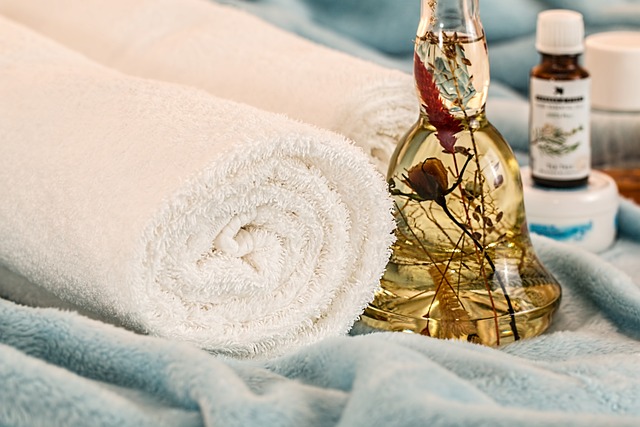Contrast therapy, involving alternating hot and cold treatments (such as hot baths/saunas and ice packs/cold water immersions), is a powerful tool for athletes to enhance performance and expedite recovery. Scientifically proven benefits include reduced inflammation, alleviated muscle soreness, improved vasodilation for faster healing, and minimized risk of overuse injuries. Regular contrast therapy practice improves microcirculation, flexibility, and overall athletic performance while effectively managing sports-related injuries. This simple yet powerful method is ideal for post-workout or training sessions, aiding in faster recovery and optimal muscle health.
Preventing overuse injuries is crucial for athletes aiming to maintain peak performance. Regular contrast therapy offers a powerful tool to achieve this, combining hot and cold treatments for enhanced recovery. This article delves into the science behind contrast therapy, exploring how alternating heat and cold accelerates muscle repair and improves overall athletic resilience. Learn practical applications, including contrast water therapy routines, to unlock the benefits for faster, healthier sports recovery.
Understanding Contrast Therapy: A Powerful Tool for Athletes
Contrast therapy has emerged as a powerful tool in the athletic world, offering athletes an effective method to enhance performance and expedite recovery. This ancient practice involves alternating between hot and cold temperatures, typically in the form of baths or compresses, to stimulate blood flow and promote muscle healing. For athletes, incorporating contrast therapy into their routine can provide significant benefits.
Hot and cold therapy for recovery is a science-backed approach that helps reduce inflammation, alleviate muscle soreness, and speed up the body’s natural repair process. The contrast between hot water (often around 104-109°F) and cold water or ice (around 32-50°F) triggers vasodilation, increasing blood circulation to affected areas, and then constriction, which helps reduce swelling. This alternating stimulation can improve flexibility, range of motion, and overall athletic performance while minimizing the risk of overuse injuries commonly associated with intense training regimens.
How Hot and Cold Therapy Enhances Recovery Processes
Contrast therapy, involving alternating hot and cold treatments, has long been a go-to method for athletes looking to enhance their recovery processes. This age-old practice accelerates the healing of muscles and joints, making it an invaluable tool in sports medicine. When an athlete sustains a muscle strain or joint sprain, applying contrast therapy can significantly reduce inflammation and promote faster repair.
Hot therapy, typically through hot baths or saunas, increases blood flow to the affected area, delivering essential nutrients and oxygen while eliminating metabolic waste products. This process helps relax tight muscles, alleviate pain, and speed up the body’s natural healing mechanisms. Conversely, cold therapy, achieved with ice packs or contrast water immersions, constricts blood vessels, reducing inflammation and numbing the injured site. The alternating application of heat and cold triggers a series of physiological responses that optimize recovery, making contrast therapy an effective strategy for athletes to prevent overuse injuries and enhance overall performance.
Unlocking the Benefits: Contrast Therapy's Impact on Muscle Repair
Contrast therapy, employing alternating hot and cold stimuli, has emerged as a powerful tool in the arsenal of athletes and sports professionals. Unlocking its potential can significantly enhance muscle repair and recovery, making it an effective strategy to prevent overuse injuries. The science behind this method lies in its ability to stimulate blood flow and promote cellular regeneration. When athletes immerse themselves in contrast water therapy, they experience vasodilation upon exposure to heat, increasing oxygen and nutrient delivery to stressed muscles. This process accelerates the removal of metabolic waste products and reduces inflammation, crucial factors in mitigating tissue damage.
Subsequent cold immersion triggers vasoconstriction, decreasing blood flow and reducing further swelling. This alternating pattern mimics nature’s healing processes, fostering an environment conducive to muscle repair. Contrast therapy for athletes is not just a quick fix; it’s a comprehensive recovery method. Regular practice can improve microcirculation, enhance flexibility, and boost overall athletic performance while effectively managing and preventing overuse injuries associated with repetitive sports movements.
Practical Application: Incorporating Contrast Water Therapy into Your Routine
Incorporating contrast therapy into your routine is a practical and effective way to enhance athletic performance and prevent overuse injuries. Contrast water therapy, which involves alternating between hot and cold temperatures, is a simple yet powerful tool for athletes looking to optimize their recovery process. For instance, a contrast bath or shower can be easily set up at home, allowing you to enjoy the benefits of both heat and cold in one session.
Starting with a warm water soak or shower helps increase blood flow to your muscles, reducing inflammation and promoting relaxation. Following this with a quick dip in cold water constricts blood vessels, reducing swelling and flushing out metabolic waste products that can contribute to muscle soreness. This cycle of alternating heat and cold is known to accelerate recovery time, reduce muscle stiffness, and improve overall athletic performance—making it an ideal method for athletes to incorporate into their post-workout or training routines.
Contrast therapy, through its clever application of hot and cold, emerges as a powerful tool in an athlete’s arsenal for preventing overuse injuries. By enhancing muscle repair processes, this simple yet effective method boosts recovery rates, making it an invaluable asset for anyone dedicated to peak athletic performance. Incorporating contrast water therapy into your routine can provide substantial benefits, ensuring you’re one step ahead in the pursuit of optimal sports recovery and injury prevention.
